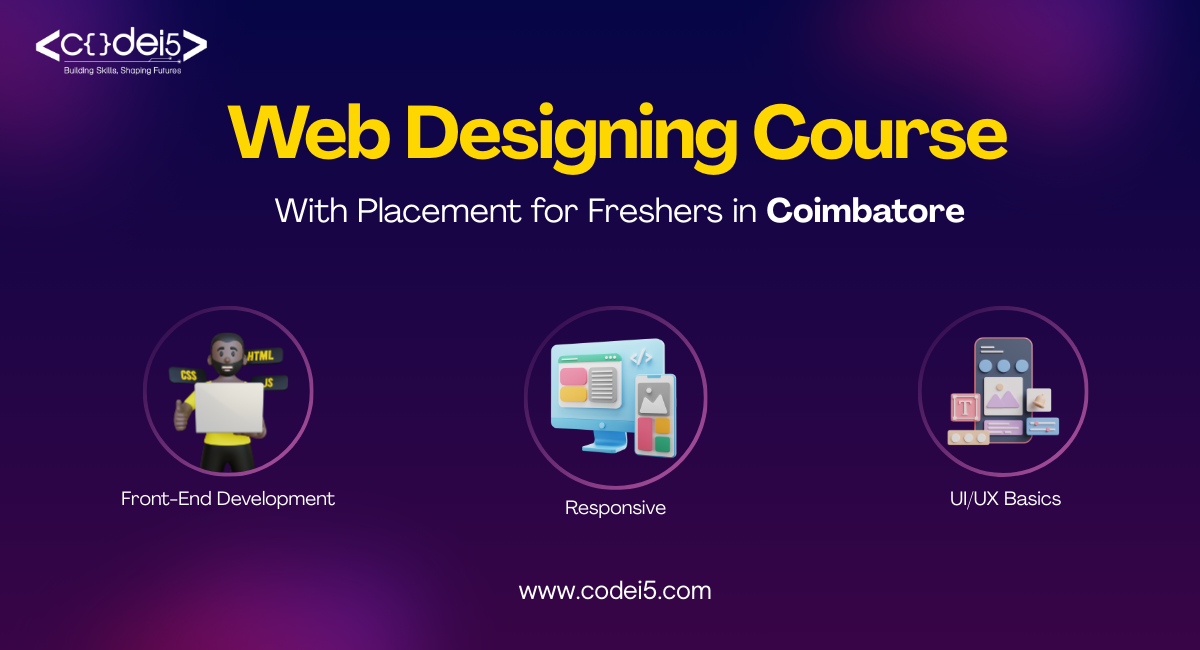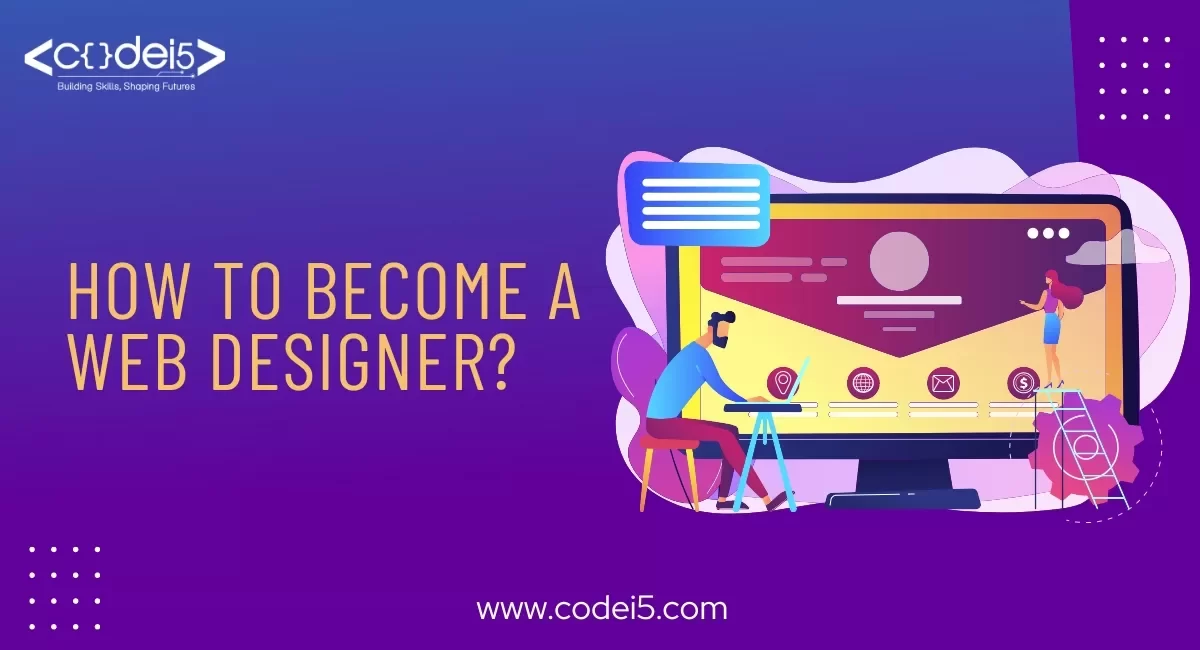
1. Introduction to Web Design
Web design plays a vital role in creating effective, visually appealing websites. It is essential for businesses to engage users and convert them into customers. Understanding the fundamentals of web design ensures your site remains competitive in 2025. As technology evolves, web design must adapt to offer better user experiences, ensuring your site is user-friendly and engaging.
2. Understanding UI Design Principles
Key Elements of UI Design
UI design is about creating a visually appealing and functional interface. The key elements of UI design include typography, colour schemes, layout, and buttons. Each element plays a crucial role in enhancing the user’s experience. The proper integration of these elements helps create a user interface that is both aesthetically pleasing and easy to use.
UI Design’s Effect on User Interaction
UI design directly affects how users interact with a website or application. A well-designed interface encourages users to engage and navigate smoothly. User interface design can lead to better user retention and satisfaction. By focusing on the UI and UX design, designers can ensure that users have a seamless experience when interacting with digital platforms.
Essential Tools for UI Design
To create an effective user interface design, designers use various tools that aid in the design process. These tools help with prototyping, designing, and testing the interface before development. Below are some essential tools for UI design:
| Tool Name | Purpose | Example Usage |
|---|---|---|
| Adobe XD | Design, prototype, and share user interfaces. | Create interactive wireframes and prototypes |
| Sketch | UI/UX design tool for web and mobile apps. | Create vector designs and user flows |
| Figma | Collaborative design tool for UI/UX design. | Work in real-time with team members. |
| InVision | Prototyping tool to create interactive designs. | Turn static designs into interactive prototypes. |
Using the right tools, UI/UX designers can ensure their designs are both functional and visually appealing.
3. UX Design: Enhancing User Experience
What is UX Design?
UX design focuses on improving the overall experience users have when interacting with websites or applications. It aims to ensure that users find the product easy to use and enjoyable. By focusing on user needs, UX designers create a seamless journey from the moment a user lands on a page. A strong user experience design leads to better customer satisfaction and higher engagement.
Differences Between UI and UX
Although both UI and UX are closely related, they serve different purposes in the design process. UI design is about the look and feel of the interface, while UX design is focused on the experience users have. Below is a comparison of the two:
| Aspect | UI Design | UX Design |
|---|---|---|
| Focus | Visual appearance and interactive elements | Overall experience and usability |
| Main Goal | Aesthetic appeal and user engagement | User satisfaction and ease of use |
| Tools | Sketch, Figma, Adobe XD | Wireframing tools, user research platforms |
| Process | Visual design, prototyping | Research, testing, and user flow optimization |
To explore the key differences between UI and UX in more detail, read this article: UI vs UX Design: What’s the Difference?
Best Practices for UX
To create an optimal user experience, several best practices should be followed. Begin with thorough user research to understand your target audience’s needs and preferences. Wireframing and prototyping help in visualizing the user flow before development begins. Regular testing with real users ensures that the UX design is aligned with user expectations and leads to continuous improvements.
4. UI/UX Trends in 2025
Popular Design Trends in 2025
The world of web design is changing, and new trends are emerging for 2025. One popular trend is dark mode, which provides a more comfortable viewing experience, especially in low-light settings. Another key trend is microinteractions, which add small animations that engage users as they interact with a site. Voice-based interfaces will continue to grow, giving users the ability to control websites with voice commands.
How to Adapt to New Trends
To remain competitive in web design, it’s important to adjust to the latest trends. One way to do this is by ensuring responsive web design, which ensures that websites work well on all devices. Additionally, using modern design tools can improve the design process, making it easier to stay ahead. Incorporating these changes will allow designers to create websites that are well-prepared for the future.
Importance of Staying Updated
To remain competitive in the web design industry, it’s essential to stay updated with the latest trends. As technology advances, designers need to refresh their skills and knowledge regularly. Participating in a Web Designing Course helps designers stay on top of emerging trends and build relevant skills. At Codei5 Academy, you can enroll in a comprehensive Web Designing Course to stay current and learn how to create modern websites that attract and engage users.
5. Responsive Web Design for Mobile
Understanding Responsive Design
Responsive web design ensures that websites adapt to various screen sizes and devices seamlessly. By using flexible layouts and grids, websites look great on desktops, tablets, and smartphones. This approach guarantees a consistent user experience, regardless of the device. A responsive design improves accessibility and usability for all users, enhancing engagement.
Mobile-Friendly Websites
Creating mobile-friendly websites is crucial as mobile usage continues to rise globally. Websites that work well on mobile devices have higher user satisfaction and retention rates. Ensuring fast load times and easy navigation on mobile enhances user experience. This results in better conversion rates and reduced bounce rates, increasing business success.
Tools and Techniques for Responsive Design
The following table lists some of the best tools and techniques used for responsive web design:
| Tools | Techniques |
|---|---|
| CSS Grid | Creating flexible layouts |
| Flexbox | Building responsive structures |
| Bootstrap | Using responsive frameworks |
| Media Queries | Customizing styles for devices |
| Viewport Meta Tag | Ensuring proper scaling on devices |
CSS Grid and Flexbox are particularly useful for creating responsive designs. These tools allow designers to control layout structures that adjust to different screen sizes. Media queries allow you to apply different CSS rules based on the device’s width. With these tools, you can create highly responsive and user-friendly websites that work across all platforms.
6. Learn Web Design with Expert Training
Taking a web designing course provides several advantages. First, it helps you gain essential skills for creating engaging user interfaces and improving user experience. A structured course gives you a deep understanding of UI/UX principles, along with practical skills in responsive design, HTML, CSS, and JavaScript. With proper training, you can confidently design visually appealing websites that function seamlessly on all devices.
At Codei5 Academy, we offer specialized web designing courses that focus on UI/UX fundamentals, responsive design techniques, and advanced website design principles. By enrolling in our Web Designing Course in Coimbatore, you’ll receive hands-on training with real-world projects. Our certification program ensures that you acquire the necessary skills to stay competitive in the fast-changing web design field. You’ll also learn how to use industry-standard tools to create user-friendly and professional websites.






